The Hidden Memory Trap: Why Your Ideas Aren't Original

TL;DR: Around age four, children achieve a cognitive breakthrough called theory of mind—understanding that others can hold false beliefs different from reality. This milestone, shaped by brain development, language skills, and cultural context, forms the foundation for empathy and all social interaction.
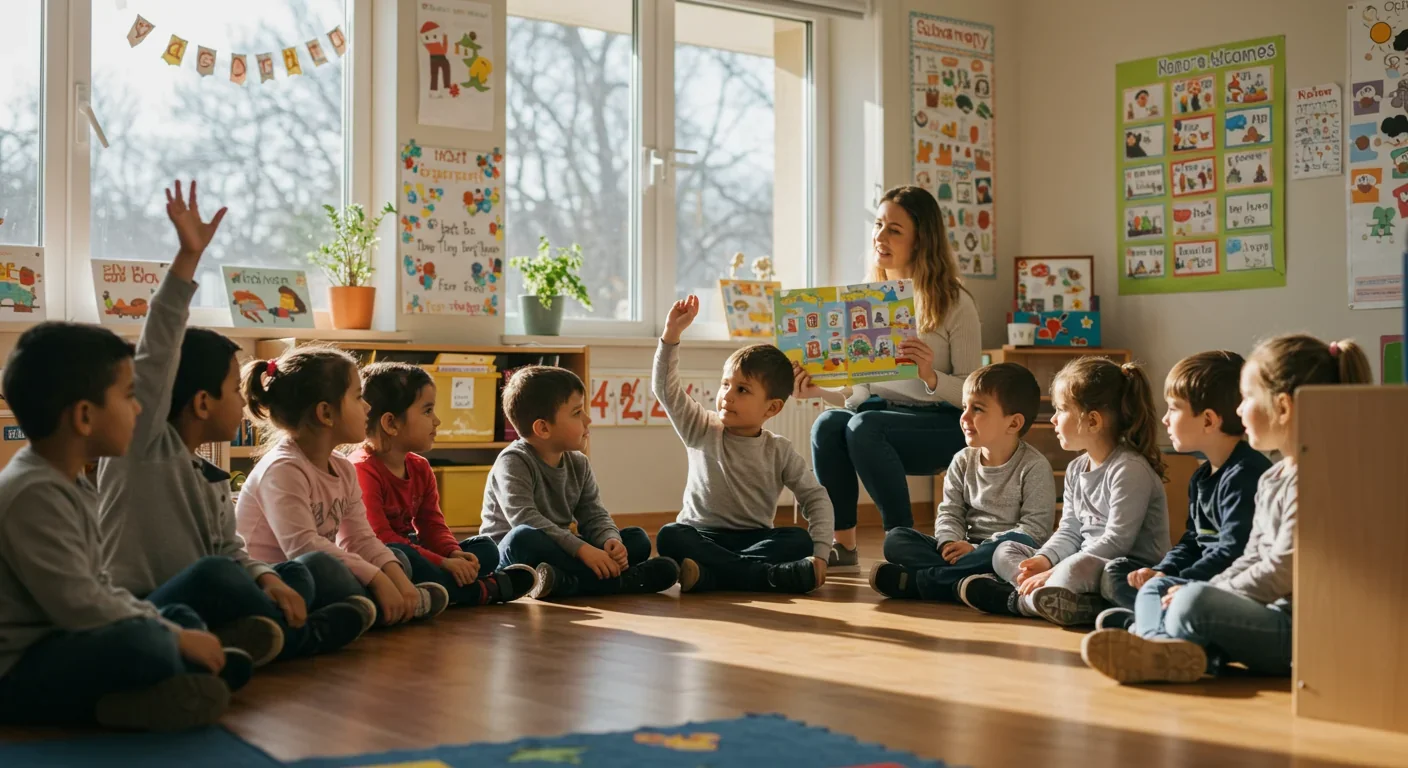
Picture a four-year-old watching someone search for their keys in the wrong place. The child knows exactly where the keys are, tucked under the couch cushion, but something remarkable happens: instead of assuming the searcher also knows this, the child understands that the other person holds a false belief. This seemingly simple realization represents one of the most profound cognitive leaps in human development—the emergence of theory of mind (ToM), the ability to recognize that other people have thoughts, beliefs, and knowledge different from our own.
For decades, developmental psychologists have puzzled over how and when children make this leap. The implications stretch far beyond academic curiosity. ToM forms the foundation of empathy, moral reasoning, effective communication, and virtually every social interaction we navigate throughout life. Understanding this developmental milestone helps parents and educators support children through a critical transition—one that typically unfolds between ages three and five, but varies significantly based on individual differences, cultural context, and neurological factors.
Recent research has challenged long-held assumptions about when children truly grasp that others can hold false beliefs. While conventional wisdom placed this milestone around age four, new evidence suggests a more nuanced picture. Some children show precursor abilities much earlier, while others don't fully master ToM reasoning until age six or seven. This variability has prompted researchers to rethink what ToM actually measures and how we can better support its development.
The most famous measure of theory of mind is deceptively simple. In the classic Sally-Anne test, developed by Simon Baron-Cohen and colleagues in 1985, children watch a scenario unfold: Sally places a marble in her basket and leaves the room. While she's gone, Anne moves the marble to her own box. When Sally returns, where will she look for her marble?
Adults immediately recognize that Sally will search her basket—that's where she last saw it. But children under four typically answer "Anne's box," seemingly unable to separate their own knowledge from Sally's. They know the marble is in the box, so they assume Sally must know too. By age four, however, most children correctly predict Sally will check her basket, demonstrating they can track someone else's outdated belief.
The Sally-Anne test reveals a profound shift: children transition from assuming everyone shares their perspective to understanding that minds are separate, private worlds.
The original study produced striking results: 85% of typically developing children passed the test, as did 86% of children with Down syndrome. But only 20% of autistic children answered correctly, a finding that shaped decades of autism research and sparked ongoing debates about what ToM deficits reveal about social cognition.
This test, despite its simplicity, opened a window into a fundamental question: when do children transition from assuming everyone shares their perspective to understanding that minds are separate, private worlds?
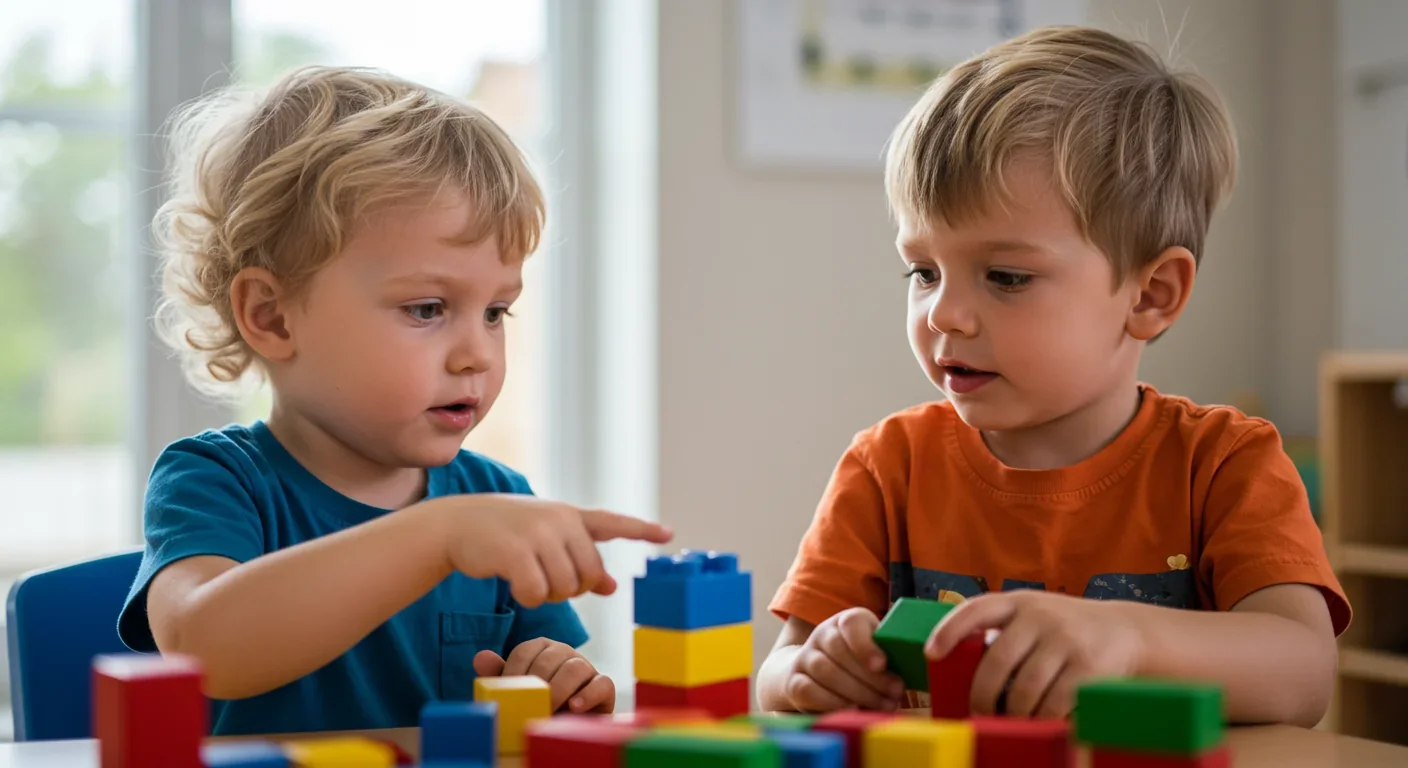
Theory of mind doesn't emerge overnight. Instead, it develops gradually through the preschool years, with the greatest growth occurring between ages 3 and 5. But like most developmental milestones, the exact timing varies considerably among children.
Around age two, children begin showing early signs of perspective-taking. They understand that others can see different things, a skill researchers call "Level 1 perspective-taking." A two-year-old knows that if they're looking at the front of a picture, someone across from them sees the back. This seems obvious to adults, but it represents an important precursor to theory of mind.
By age three, children typically understand that people can have different desires. They recognize that while they might want chocolate ice cream, their friend might prefer strawberry. This "desire psychology" marks progress but still falls short of true ToM. Three-year-olds consistently fail false-belief tasks like Sally-Anne because they haven't yet grasped that people can hold beliefs that don't match reality.
The breakthrough typically happens around age four. Studies consistently show that four-year-olds perform significantly better on false-belief tasks than three-year-olds. This doesn't mean every four-year-old passes—developmental psychologists talk about this as a probabilistic shift rather than a hard boundary. Some precocious three-year-olds succeed, while some five-year-olds still struggle.
What causes this shift? Researchers have identified several contributing factors. Language development plays a crucial role—children need sophisticated linguistic abilities to understand mental state verbs like "think," "believe," and "know." Working memory capacity also matters, as tracking someone else's false belief while holding the true state of affairs in mind requires cognitive resources.
"The greatest growth of this ability to attribute mental states is believed to take place primarily during the preschool years between the ages of 3 and 5."
— Developmental Psychology Research
Interestingly, ToM development doesn't stop at age four. More complex forms of social reasoning continue developing well into middle childhood. Second-order theory of mind—understanding that "John thinks that Mary believes X"—typically doesn't emerge until ages six to eight. And research shows that even children aged 6 to 8 are still refining these abilities, with many not fully mastering all ToM tasks.
Recent studies suggest that conventional tests might actually underestimate young children's abilities. Implicit measures of false-belief understanding show that even 15-month-olds display surprise when someone searches in the "wrong" location, suggesting some early, non-verbal appreciation of others' perspectives. This has led researchers to distinguish between implicit ToM (automatic, intuitive understanding) and explicit ToM (deliberate, verbal reasoning)—with different developmental trajectories for each.
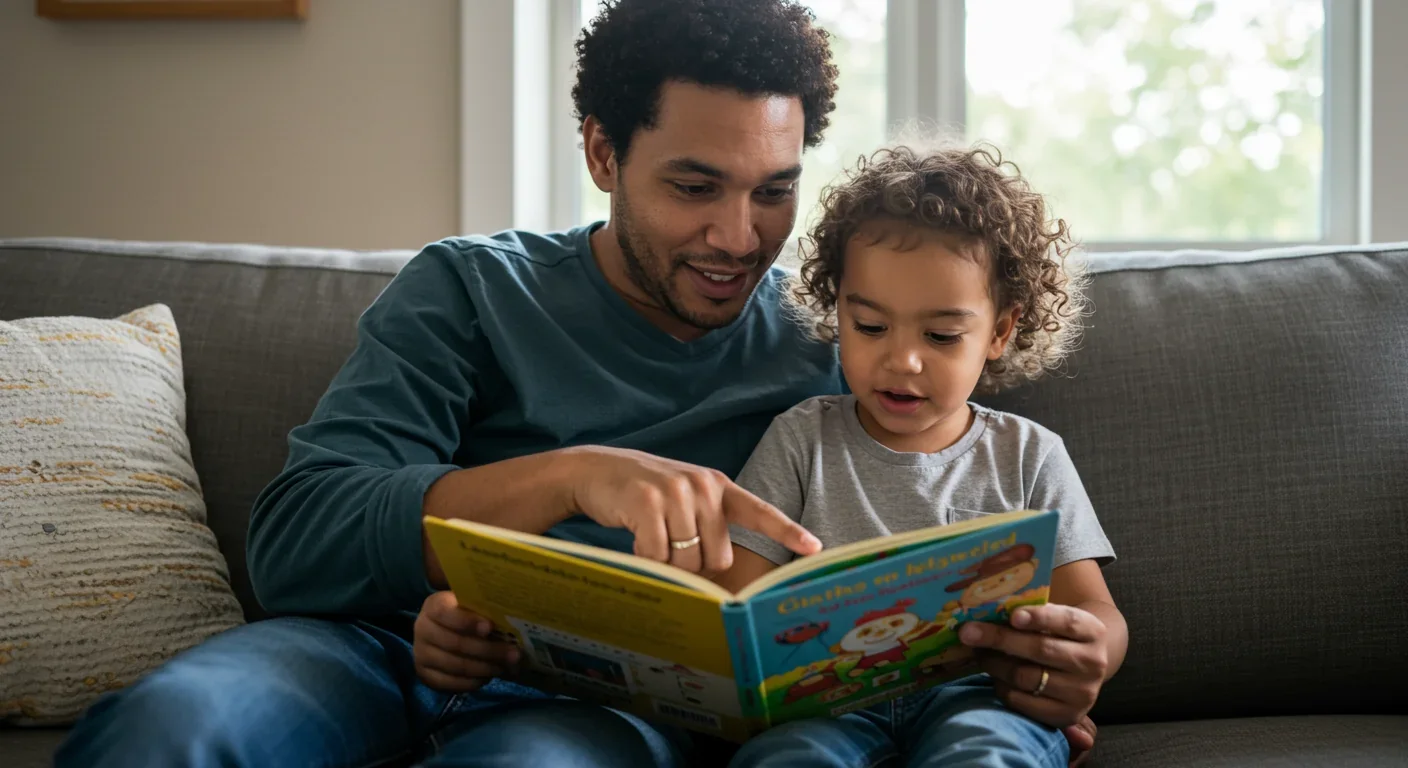
For years, researchers treated ToM development as a universal, biologically determined process. Children everywhere passed false-belief tasks around age four, reinforcing the idea that this milestone reflected brain maturation independent of cultural context. But cross-cultural research has revealed a more complex picture.
Studies comparing Australian and Iranian children found significant differences in ToM development timing and patterns. Similar research across diverse cultures—from East Asian societies emphasizing collective thinking to Western cultures prioritizing individual autonomy—shows that cultural values and family practices significantly influence when and how children develop perspective-taking abilities.
In some collectivist cultures, children develop certain ToM skills earlier, particularly those related to understanding group intentions and social harmony. In individualist cultures, children might excel sooner at recognizing individual desires and beliefs. These differences aren't deficits—they reflect different priorities in what aspects of social cognition matter most.
Language plays an interesting role here. Children learning languages that explicitly mark evidentiality—grammatical features indicating how someone knows something—tend to perform better on false-belief tasks at younger ages. Similarly, families that engage in frequent mental state talk ("I think..." "She believes..." "He wants...") have children who develop ToM earlier.
The social environment matters profoundly. Children with siblings, particularly older siblings, develop ToM abilities earlier than only children. The constant negotiation, perspective-taking, and conflict resolution inherent in sibling relationships apparently provides rich training ground for understanding others' minds. Interestingly, this advantage persists even after controlling for other factors like family size and socioeconomic status.
Parenting styles also influence ToM development. Parents who engage their children in conversations about mental states, who explain others' behaviors in terms of thoughts and feelings, and who encourage perspective-taking have children who develop ToM earlier. This doesn't require any special training—just naturally talking through social situations helps: "Why do you think Sarah is upset? What was she expecting to happen?"
Children with siblings develop theory of mind abilities earlier than only children, with the constant social negotiation providing natural training in perspective-taking.
These cultural and family variations reveal something important: while ToM may rest on biological foundations, its expression is profoundly shaped by social experience. Children don't simply mature into perspective-takers—they're actively taught through countless daily interactions what it means to understand another mind.

What happens in the brain when a child successfully recognizes someone else's false belief? Neuroscientists have worked to map the neural architecture underlying theory of mind, and their findings illuminate why this ability emerges when it does.
Several brain regions form the ToM network. The temporoparietal junction (TPJ), particularly in the right hemisphere, consistently activates when people think about others' mental states. The medial prefrontal cortex (mPFC) appears crucial for distinguishing self from other and for representing others' beliefs. The superior temporal sulcus (STS) helps process biological motion and social cues.
These regions undergo significant development during the preschool years, which helps explain why ToM emerges when it does. The prefrontal cortex—critical for executive functions like inhibitory control and working memory—shows particularly rapid development between ages three and five. This timing isn't coincidental.
Understanding false beliefs requires inhibitory control: children must inhibit their own knowledge of reality to consider someone else's mistaken belief. It requires working memory: holding multiple representations in mind simultaneously. And it requires mental flexibility: shifting between their own perspective and another's. All these executive functions depend on prefrontal development.
Brain imaging studies reveal that the ToM network doesn't just mature—it becomes more specialized and efficient. Young children solving ToM tasks show widespread activation across many brain regions, suggesting effortful processing. Older children and adults show more focused activation in the core ToM network, indicating automaticity.
Connectivity between brain regions also increases. The TPJ communicates more efficiently with the mPFC, allowing better integration of social information. White matter tracts linking these regions continue developing well into adolescence, which may explain why sophisticated social reasoning abilities keep improving long after basic ToM is established.
"Brain imaging studies show that as children mature, their theory of mind network becomes more specialized and efficient, shifting from widespread effortful activation to focused automatic processing."
— Cognitive Neuroscience Research
Genetic factors also play a role, though the picture is complex. Twin studies suggest moderate heritability for ToM abilities—somewhere around 40-50%. This means genes matter, but so does environment. No single "ToM gene" exists; rather, many genes influence brain development, language acquisition, and social motivation, all of which feed into perspective-taking abilities.
The discovery that autistic children struggle with false-belief tasks sparked decades of research into ToM deficits and their relationship to social difficulties. But the story is more nuanced than originally thought.
Yes, only about 20% of autistic children pass the Sally-Anne test, compared to 85% of neurotypical children. But this doesn't mean autistic people completely lack theory of mind. Many autistic adults develop sophisticated ToM reasoning, though it may require more conscious effort than for neurotypical people.
Recent research challenges the "mindblindness" theory that once dominated autism research. Some autistic people show ToM deficits, while others don't. The difficulties may stem less from an inability to understand others' minds and more from differences in social motivation, sensory processing, or language comprehension that make ToM tasks particularly challenging.
The double empathy problem offers an alternative perspective: perhaps autistic people don't lack empathy or perspective-taking; rather, neurotypical and autistic people struggle equally to understand each other's different ways of thinking. This reframes ToM differences as mutual rather than one-sided deficits.
Language plays a confounding role. Many false-belief tasks require understanding complex verbal instructions and questions. Autistic children with language delays may fail these tests not because they lack ToM but because the linguistic demands exceed their abilities. Simplified, non-verbal versions of false-belief tasks yield higher pass rates among autistic children, supporting this interpretation.
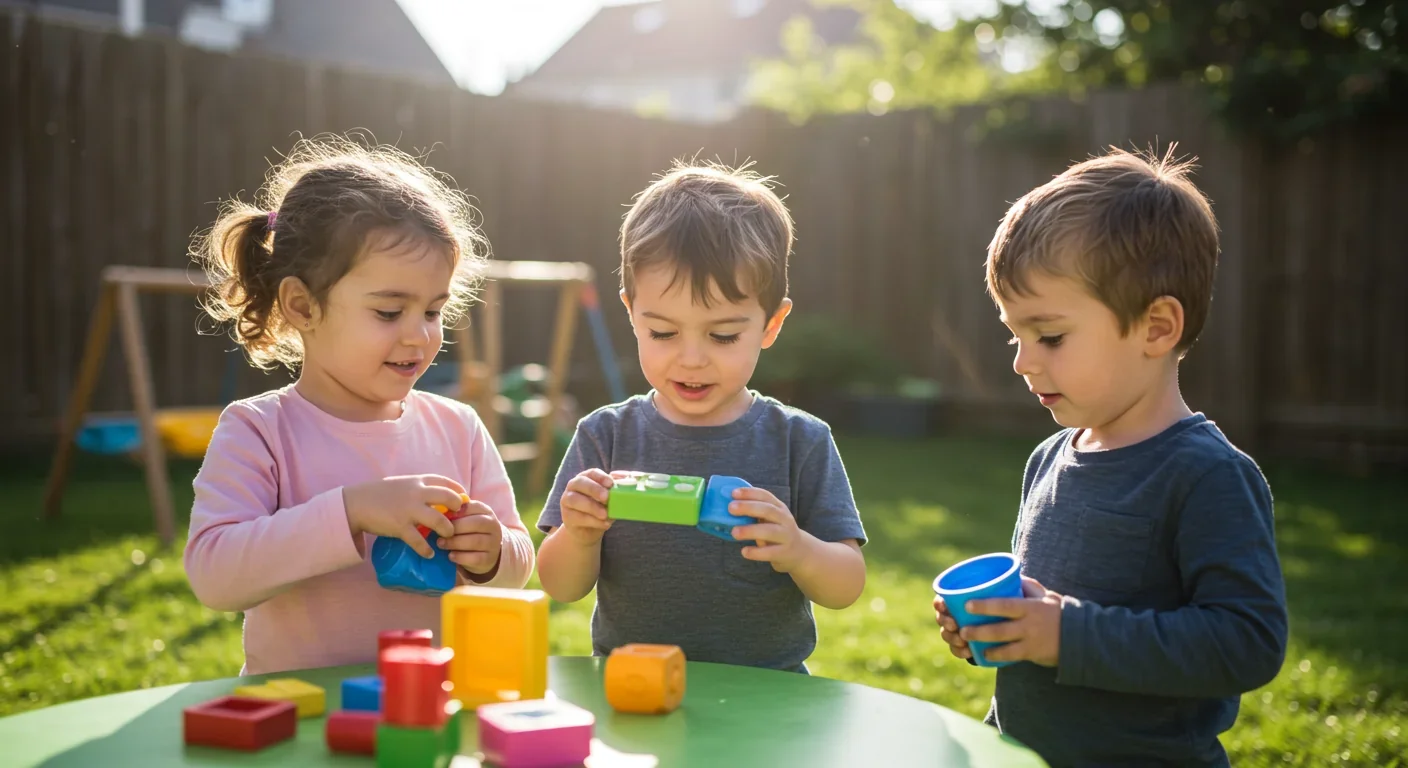
Theory of mind difficulties aren't unique to autism. People with schizophrenia also show significant impairments in false-belief understanding and intention attribution. This makes sense given that schizophrenia involves distorted thinking about others' intentions and paranoid beliefs about what others are thinking.
Children with developmental language disorders often show delayed ToM development, reinforcing the tight connection between language and social cognition. Those with ADHD may struggle with ToM tasks due to executive function deficits rather than core perspective-taking problems.
Understanding these variations has practical implications. ToM-focused interventions can help children who struggle with perspective-taking, whether due to autism, language delays, or other factors. Teaching strategies include explicit instruction about mental states, practice with emotion recognition, role-playing exercises, and using stories to explore characters' thoughts and motivations.
Theory of mind doesn't emerge in isolation. A constellation of earlier-developing abilities sets the stage for the false-belief breakthrough.
Joint attention—the ability to share focus with another person on an object or event—appears in infancy and predicts later ToM. A baby who follows your gaze to see what you're looking at is already beginning to understand that you have a separate perspective focused on something in the world.
Pretend play, which flourishes in toddlerhood, requires distinguishing reality from imagination. When a two-year-old pretends a banana is a telephone, they're practicing mental representation—holding in mind that the banana is still a banana while treating it as something else. This dual representation ability provides scaffolding for later understanding that someone can believe something (their representation) that differs from reality (the actual state of affairs).
Emotion understanding develops progressively. Infants recognize basic emotions from facial expressions. Toddlers understand that people feel happy when they get what they want and sad when they don't. Preschoolers grasp that the same situation might provoke different emotions in different people. This emotional perspective-taking often emerges before cognitive perspective-taking about beliefs.
Pretend play in toddlerhood provides crucial practice in mental representation—the foundation for understanding that beliefs can differ from reality.
Understanding the seeing-knowing relationship is another precursor. Around age three, children realize that seeing leads to knowing—if you saw where the toy was hidden, you know where it is; if you didn't see, you don't know. This insight about knowledge access paves the way for understanding false beliefs.
Executive function development—particularly inhibitory control and cognitive flexibility—enables children to manage the cognitive demands of ToM reasoning. Studies show correlations between working memory capacity and false-belief task performance, especially on more complex versions of the tasks.
Language development is perhaps the most crucial prerequisite. Children need mental state vocabulary to think and talk about beliefs, desires, and knowledge. They need understanding of complement clauses ("Sally thinks [that the marble is in the basket]") to represent embedded propositions. Research consistently shows that language ability predicts ToM performance, even after controlling for age.
Some researchers argue about which comes first—does language enable ToM, or does emerging ToM understanding drive language development? The answer likely involves bidirectional influence, with each domain supporting growth in the other.
Understanding ToM development isn't just academically interesting—it has real implications for parenting, education, and supporting children's social development.
The good news is that parents and educators can actively support ToM growth through everyday interactions. Mental state talk—simply talking about thoughts, feelings, beliefs, and desires—helps children develop the conceptual framework for understanding minds. Instead of saying "Don't grab that toy," try "I see you want that toy, but Jamie is still playing with it. He's not finished yet."
Reading stories together provides natural opportunities for perspective-taking. Pause to ask: "Why do you think he did that? What was she feeling? Did he know about the surprise?" Picture books that show characters with different knowledge states are particularly helpful.
Pretend play offers rich ToM training. When children engage in role-play, they practice adopting different perspectives, attributing mental states to characters, and coordinating shared imaginary scenarios. Rather than providing structured activities, simply allowing time and space for imaginative play supports ToM development.
For children struggling with ToM—whether due to autism, language delays, or typical variation—more explicit teaching can help. Structured interventions might include teaching about different belief types, practicing perspective-taking through games, using visual supports to represent mental states, and creating social stories that walk through mental state reasoning.
The social environment matters enormously. Children benefit from interaction with peers and siblings who provide natural practice in perspective-taking. Conflicts—while frustrating—offer learning opportunities when adults help children work through different viewpoints: "You wanted to keep building, but she wanted to play something else. What could you do when people want different things?"
For educators, understanding ToM development helps interpret children's social difficulties. A child who struggles with sharing might not be selfish—they might genuinely not yet grasp that others have desires different from their own. A child who doesn't respond to hints might lack the ToM sophistication to infer indirect communication. Recognizing these developmental limitations prevents misattributing malice or defiance to what's actually cognitive immaturity.
As children move through elementary school, ToM continues developing in sophistication. Older children learn about second-order beliefs, sarcasm, white lies, and complex social emotions like embarrassment. These advanced social cognition skills remain teachable—middle schoolers benefit from explicit discussion of social nuances, analyzing characters' motivations in literature, and reflecting on their own and others' mental states.
Despite decades of research, many questions about ToM development remain unanswered. Researchers continue investigating why the typical age of false-belief understanding is four rather than three or five. What exactly changes in the brain and cognition during that year that enables this breakthrough?
The relationship between implicit and explicit ToM remains puzzling. If infants show surprise when people act inconsistent with false beliefs, suggesting implicit understanding, why do three-year-olds fail explicit false-belief questions? Some researchers argue that early implicit capacities are qualitatively different from later explicit reasoning. Others suggest that performance demands—language, inhibitory control, task complexity—mask earlier conceptual understanding.
New testing paradigms challenge assumptions about what false-belief tasks actually measure. When researchers modify the Sally-Anne test to include more response options or require tracking multiple beliefs, even five-year-olds struggle. This raises questions: do standard tests set an artificially low bar? Or do they capture a genuine developmental achievement that more complex reasoning builds upon?
Cultural research has only scratched the surface. Most ToM studies still focus on Western, educated populations. We need broader research across cultures to understand how different social structures, languages, and childrearing practices shape social cognitive development. Do collectivist societies develop different forms of ToM? How do cultural concepts of mind and selfhood influence perspective-taking?
The neuroscience of ToM continues evolving. Advanced imaging techniques are revealing more precise networks and developmental patterns. Studies examining brain connectivity and neural efficiency promise to illuminate how the ToM network matures and specializes.
Intervention research needs expansion. While we know some strategies support ToM development, we need more rigorous studies evaluating what works best for which children. Can targeted ToM training help autistic children, or are there better approaches to supporting their social cognition?
Finally, researchers are exploring how ToM relates to other crucial capacities: moral reasoning, lie detection, humor appreciation, persuasion, and pedagogy. Understanding these connections could reveal ToM as one component of a broader "social brain" that develops interdependently across domains.
The moment children realize that others can hold false beliefs represents more than passing a clever test. It marks their entry into the full complexity of human social life—a world where people's actions flow from their unique perspectives, where misunderstanding is possible, where communication requires bridging separate minds.
This breakthrough, typically emerging around age four but varying widely, depends on brain maturation, language development, executive function, and social experience. Culture shapes its expression. Difficulties with ToM characterize several developmental and psychiatric conditions. And most importantly, supportive environments can nurture this critical capacity.
Parents watching their preschoolers navigate friendships, negotiate conflicts, and begin understanding others' viewpoints are witnessing one of development's most important transitions. Those children are discovering something profound: that other people truly do have minds of their own, complete with beliefs that may be false, desires that differ from theirs, and knowledge that's distinct.
This realization—that minds are separate, private, sometimes mistaken, always worthy of understanding—forms the foundation not just for social success but for empathy, morality, and the cooperation that makes human societies possible. Theory of mind isn't just a milestone we pass. It's a capacity we continue developing and refining throughout life, one that enables us to live together in a world of minds.

Curiosity rover detects mysterious methane spikes on Mars that vanish within hours, defying atmospheric models. Scientists debate whether the source is hidden microbial life or geological processes, while new research reveals UV-activated dust rapidly destroys the gas.

CMA is a selective cellular cleanup system that targets damaged proteins for degradation. As we age, CMA declines—leading to toxic protein accumulation and neurodegeneration. Scientists are developing therapies to restore CMA function and potentially prevent brain diseases.

Intercropping boosts farm yields by 20-50% by growing multiple crops together, using complementary resource use, nitrogen fixation, and pest suppression to build resilience against climate shocks while reducing costs.

Cryptomnesia—unconsciously reproducing ideas you've encountered before while believing them to be original—affects everyone from songwriters to academics. This article explores the neuroscience behind why our brains fail to flag recycled ideas and provides evidence-based strategies to protect your creative integrity.
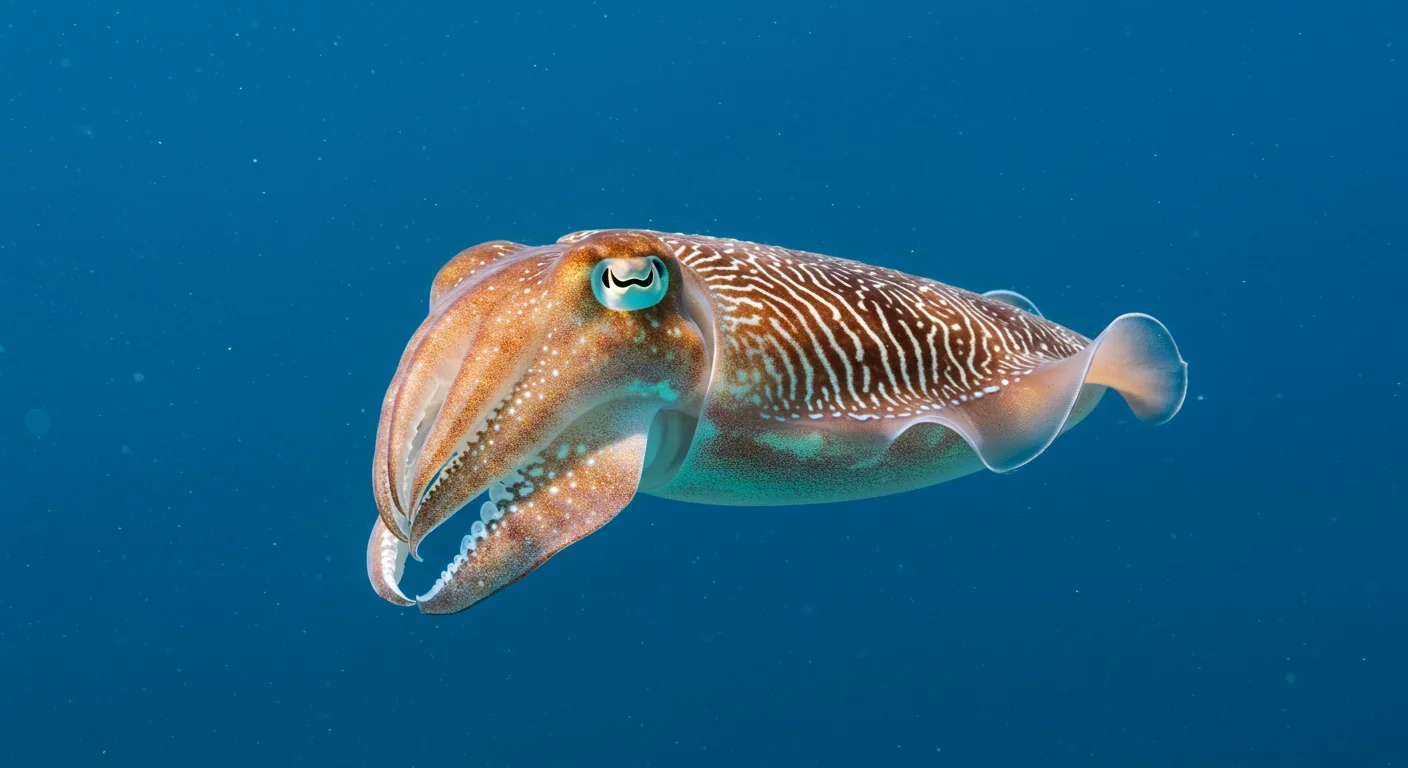
Cuttlefish pass the marshmallow test by waiting up to 130 seconds for preferred food, demonstrating time perception and self-control with a radically different brain structure. This challenges assumptions about intelligence requiring vertebrate-type brains and suggests consciousness may be more widespread than previously thought.

Epistemic closure has fractured shared reality: algorithmic echo chambers and motivated reasoning trap us in separate information ecosystems where we can't agree on basic facts. This threatens democracy, public health coordination, and collective action on civilizational challenges. Solutions require platform accountability, media literacy, identity-bridging interventions, and cultural commitment to truth over tribalism.

Transformer architectures with self-attention mechanisms have completely replaced static word vectors like Word2Vec in NLP by generating contextual embeddings that adapt to word meaning based on surrounding context, enabling dramatic performance improvements across all language understanding tasks.